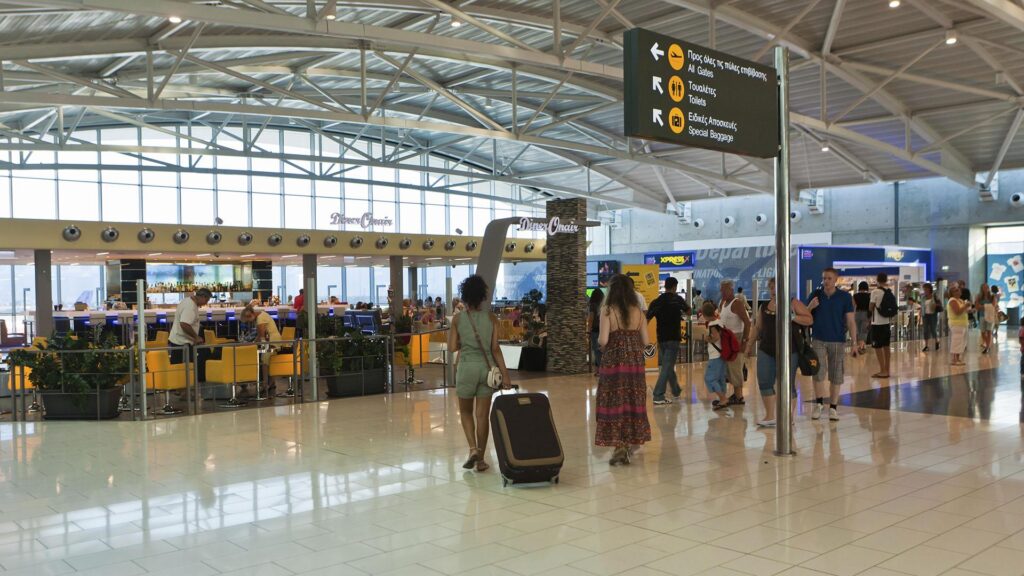Ambitious 30-Month Project to Nearly Double Passenger Capacity at Larnaka and Pafos Airports, Cyprus is entering a new era of aviation infrastructure development as a consortium led by Bouygues Bâtiment International, in partnership with local construction firm Iacovou Brothers, has been awarded a landmark €170 million design-and-build contract to deliver Phase 2 extensions at the nation’s two primary airports: Larnaka International Airport and Pafos International Airport.
The transformative project is being spearheaded by Hermes Airports, the private operator responsible for managing both airports under a long-term concession agreement with the Republic of Cyprus. The expansion aims to significantly increase both capacity and passenger experience, and to position Cyprus as a critical gateway between Europe, the Middle East, and Asia.
Under the expansion blueprint, Larnaka Airport, currently handling 7.5 million passengers per year, will see its capacity increase to 12.4 million, while Pafos Airport will grow from 2.7 million to 5 million passengers annually. These developments represent a nearly twofold increase in total national airport throughput, a move that is both timely and strategic amid rising tourism demand and increasing regional connectivity needs.
The construction timeline is set at 30 months for Larnaka and 27 months for Pafos, during which both airports will remain fully operational. Bouygues Bâtiment International, which holds €119 million of the overall contract value, brings extensive experience in large-scale airport projects around the globe, while Iacovou Brothers will provide on-the-ground execution and regional expertise.
At the heart of the Larnaka upgrade is a three-storey extension to the existing terminal building. This will house additional security screening facilities, retail and food service areas, and expanded departure lounges, offering an enhanced experience for both leisure and business travellers. A new airside pier will also be constructed, featuring walk-in boarding gates and arrival areas, along with additional aircraft stands, improving operational efficiency and reducing aircraft turnaround times.
Meanwhile, the Pafos Airport extension includes enhanced border control capacity, revamped commercial zones, and increased space for baggage handling and security screening. In addition, a southern taxiway extension is expected to improve aircraft movement efficiency and capacity during peak travel seasons.
These upgrades are designed not just to add volume, but to enhance operational resilience, passenger satisfaction, and overall airport performance in line with international aviation standards.
To ensure the highest standards of quality and efficiency, Hermes Airports has enlisted a project management consortium comprising U.S.-based engineering firm Hill International and Greek consultancy Salfo & Associates. This team will provide engineering oversight, construction supervision, and quality assurance throughout the life of the project, ensuring that every aspect aligns with global aviation safety and performance benchmarks.
The timing of this expansion couldn’t be more critical. Cyprus has seen a strong rebound in international tourism following the pandemic years, with 2024 marking one of the busiest summers in a decade. According to the Cyprus Tourism Organisation, air arrivals increased by over 18% year-on-year, with projections for further growth in 2025 and beyond.
The airport upgrades are expected to generate a cascade of economic benefits for the island nation. By accommodating more travellers and facilitating smoother passenger flows, the enhanced terminals will support not only tourism but also trade, business travel, and investment. The construction phase itself is set to create hundreds of local jobs, while increased airport capacity will offer long-term opportunities for retail operators, logistics providers, service contractors, and transport companies.
The Larnaka and Pafos airport expansions are more than just infrastructural projects—they are strategic investments in the island’s future. With Cyprus aiming to position itself as a regional hub for aviation, business services, and tourism, enhancing airport efficiency and capacity is a key enabler of national growth.

The new facilities are also designed with sustainability and climate goals in mind, incorporating energy-efficient systems, low-emission materials, and smart building technologies. Hermes Airports has signalled its intention to reduce the airports’ environmental footprint through green construction practices and modernised infrastructure that adheres to European climate standards.
This isn’t Bouygues’ first involvement with Cypriot aviation. The French construction giant also played a leading role in the initial modernisation of both airports completed in 2009, a partnership that laid the foundation for the country’s dramatic rise in tourism and international connectivity over the past two decades.
“This project marks a new stage for Hermes Airports in the development of Larnaka and Pafos airports, which we already completed in 2009,” said Pierre-Eric Saint-André, Deputy CEO of Bouygues Construction. “We are proud to continue our collaboration and contribute once more to Cyprus’ infrastructure excellence.”
As global air travel trends point toward increased demand for regional hubs and efficient point-to-point routes, Cyprus’ expansion of its two main international airports is both a necessary and forward-thinking move. Once completed, Larnaka and Pafos will not only be equipped to handle higher volumes but will also offer a world-class passenger experience that reflects Cyprus’ growing reputation on the world stage.
With shovels in the ground and plans in place, this €170 million investment is set to reshape the Cypriot aviation landscape, bolster the economy, and reaffirm the island’s status as one of the Eastern Mediterranean’s most accessible and welcoming destinations.



